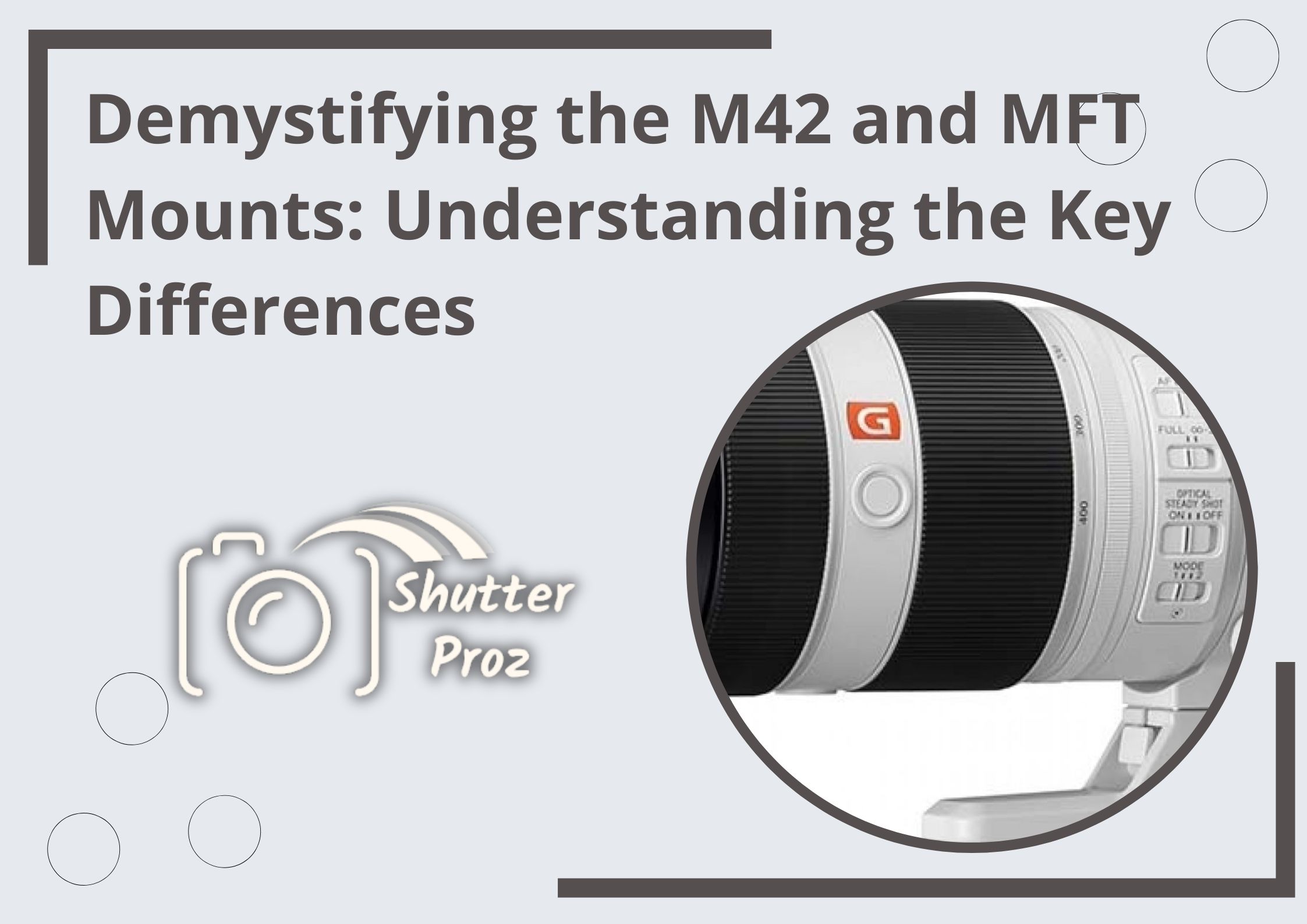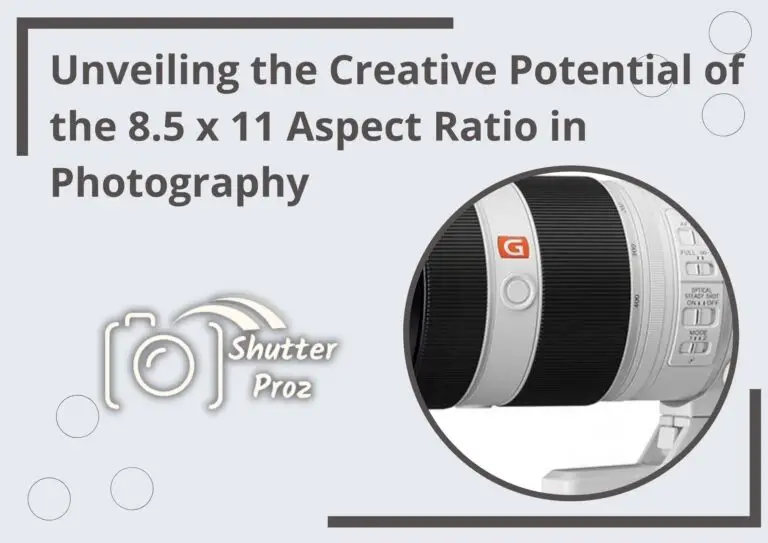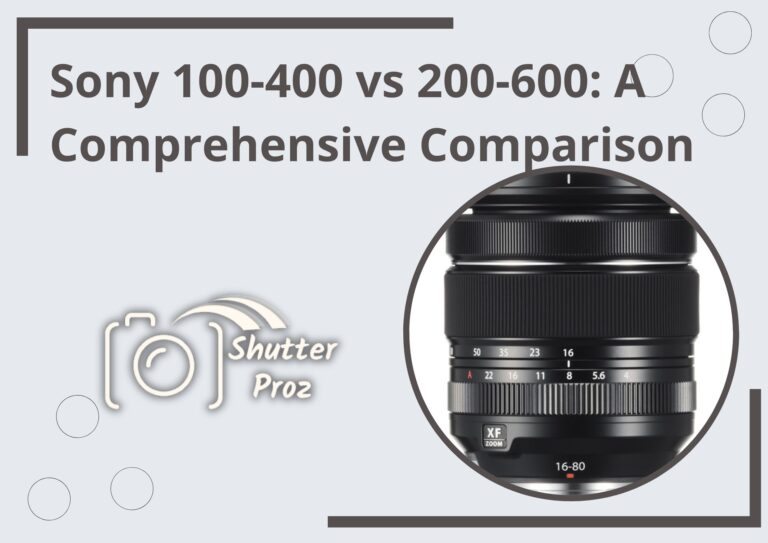Demystifying the M42 and MFT Mounts: Understanding the Key Differences
In the world of photography, different camera systems and lens mounts offer unique features and compatibility options. Among them, the M42 and MFT mounts have garnered attention from enthusiasts and professionals alike. However, there seems to be a misconception that the M42 mount is the same as the MFT mount.
In this article, we unravel the truth behind this belief and shed light on the distinctive characteristics of these two mounts.
What to know about the M42 Mount?
The M42 mount, also known as the Pentax screw mount, is a manual focus lens mount that originated in the mid-20th century. It gained popularity due to its wide compatibility across various camera brands.
The M42 mount features a threaded connection and is characterized by its 42mm diameter and 1mm pitch. Many classic lenses, renowned for their optical quality, were produced in the M42 mount.
What camera uses an M42 mount?
The M42 mount, also known as the Pentax screw mount, was primarily used by Pentax and various other camera manufacturers during the mid-20th century. Pentax cameras, such as the Pentax Spotmatic and Pentax K1000, were known for their utilization of the M42 mount.
Other camera brands, including Fujica, Praktica, Zenit, and Yashica, also incorporated the M42 mount into some of their camera models.
The M42 mount gained popularity due to its compatibility across different camera brands, making it a versatile option for photographers and allowing them to use a wide range of M42 lenses with these cameras.
What to know about the MFT Mount?
On the other hand, the MFT (Micro Four Thirds) mount is a digital lens mount system developed jointly by Olympus and Panasonic. It is designed specifically for mirrorless interchangeable lens cameras.
The MFT mount features a smaller flange focal distance and a 2x crop factor, offering compact camera bodies and a wide range of lens options. The system has gained popularity for its versatility and portability.
Which cameras use MFT?
The Micro Four Thirds (MFT) system was jointly developed by Olympus and Panasonic specifically for mirrorless interchangeable lens cameras. As a result, cameras from these two brands have extensively adopted the MFT mount. Some popular camera models that utilize the MFT mount include:
- Olympus OM-D Series: Cameras like the Olympus OM-D E-M1 Mark III, E-M5 Mark III, and E-M10 Mark IV.
- Olympus PEN Series: Compact and stylish cameras like the Olympus PEN E-PL10, E-PL9, and E-PL8.
- Panasonic Lumix G Series: Cameras such as the Panasonic Lumix GH5, GH5S, G9, and GX9.
- Panasonic Lumix GX Series: Compact and versatile cameras like the Panasonic Lumix GX8, GX85, and GX7.
- Other Brands: Several other camera manufacturers, including Blackmagic Design, DJI, and Kodak, have also released MFT-compatible cameras, expanding the options available for photographers using the MFT system.
The MFT system has gained popularity due to its compact size, excellent image quality, and a wide range of lenses available from various manufacturers. It offers photographers and videographers a lightweight, versatile solution for capturing high-quality images and videos.
What are the Key Differences between M42 and MFT Mounts?
Here’s a deep comparison table highlighting the key differences between the M42 and MFT mounts:
| Aspect | M42 Mount | MFT Mount |
|---|---|---|
| Type | Screw Mount | Bayonet Mount |
| Diameter | 42mm | Varies (typically around 38-39mm) |
| Flange Focal Distance | 45.46mm | 19.25mm |
| Crop Factor | Full-frame or APS-C (depending on camera) | 2x |
| Autofocus | Manual Focus Only | Both Manual and Autofocus available |
| Electronic Communication | Limited to Manual Aperture Control | Full Electronic Communication |
| Lens Options | Wide range of vintage lenses available | Wide range of lenses from various manufacturers |
| Compatibility | Requires adapters for most modern cameras | Designed specifically for MFT cameras |
| System Size | Larger and heavier compared to MFT | Compact and lightweight |
| Image Quality | Capable of producing high-quality images | Excellent image quality with MFT lenses |
It is essential to clarify that the M42 mount is not the same as the MFT mount. The two mounts have significant differences in physical characteristics and design.
The M42 mount has a larger diameter and longer flange focal distance compared to the MFT mount. This means that M42 lenses cannot be directly mounted on MFT cameras without the use of adapters or modifications.
Moreover, compatibility between M42 and MFT lenses is not automatic. While there are adapters available in the market that enable M42 lenses to be used on MFT cameras, these adapters introduce additional considerations and challenges.
Factors such as manual focusing, loss of electronic communication, and potential image quality compromises should be taken into account when adapting M42 lenses to MFT cameras.
Adapting M42 Lenses to MFT Cameras
Adapters play a crucial role for photographers interested in using M42 lenses on their MFT cameras. These adapters bridge the gap between the different mounts, allowing for the physical connection of M42 lenses to MFT camera bodies.
However, it is important to note that adapters vary in quality, precision, and compatibility. Choosing a reliable adapter and understanding the potential limitations are essential for a smooth and successful adaptation process.
Shutter proz
Conclusion
In conclusion, the M42 and MFT mount are distinct lens mounting systems with unique characteristics and compatibility considerations. While the M42 mount gained popularity for its wide compatibility across different camera brands, the MFT mount was specifically designed for mirrorless interchangeable lens cameras, offering compactness and versatility. Understanding the key differences between these mounts is crucial to ensure accurate information regarding lens compatibility. By clarifying misconceptions and shedding light on the distinctive features of these mounts, photographers can make informed decisions when choosing lenses and adapting them to their camera systems.






